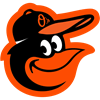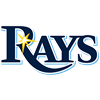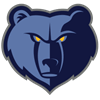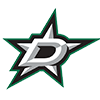As is the case every season, there really isn't one specific way to target outfielders for your drafts. You may hear from others that OF is shallower or deeper in certain seasons. But any way you slice it, there will always be late-round outfielders who out-earn their draft positions, not to mention plenty of serviceable ones available in FAAB. Regardless, it's always a good idea to separate the outfielders into tiers before your drafts and make note of the ones you plan on targeting.
Much of the way your outfield is built depends on where you see value. If you truly believe that Jacoby Ellsbury, David Peralta, Michael Brantley and Yasiel Puig are going to be top-30 outfielders this season, then there's nothing wrong with a strategy of taking one early outfielder and building depth at the other positions while waiting for the late-round guys. Of course, this is based on the idea that you won't be asleep at the wheel later and don't mind reaching a round or two for your must-have targets. If you're identifying a dozen or so heavily underpriced outfielders after Round 15, then you have to be especially careful in the first half of your draft since there will always be a handful of viable OF options available in each round.
Flexibility and Value Drafting
Personally, I'm seeing plenty of late-round value at the position, but I never go into a draft inflexible. Though I don't particularly rigidly adhere to the concept of
As is the case every season, there really isn't one specific way to target outfielders for your drafts. You may hear from others that OF is shallower or deeper in certain seasons. But any way you slice it, there will always be late-round outfielders who out-earn their draft positions, not to mention plenty of serviceable ones available in FAAB. Regardless, it's always a good idea to separate the outfielders into tiers before your drafts and make note of the ones you plan on targeting.
Much of the way your outfield is built depends on where you see value. If you truly believe that Jacoby Ellsbury, David Peralta, Michael Brantley and Yasiel Puig are going to be top-30 outfielders this season, then there's nothing wrong with a strategy of taking one early outfielder and building depth at the other positions while waiting for the late-round guys. Of course, this is based on the idea that you won't be asleep at the wheel later and don't mind reaching a round or two for your must-have targets. If you're identifying a dozen or so heavily underpriced outfielders after Round 15, then you have to be especially careful in the first half of your draft since there will always be a handful of viable OF options available in each round.
Flexibility and Value Drafting
Personally, I'm seeing plenty of late-round value at the position, but I never go into a draft inflexible. Though I don't particularly rigidly adhere to the concept of value-based drafting, there are many sage roto players who do just that: Regardless of positional need, they'll draft players who've dropped a round or two simply because they've fallen past their ADP. The concern with this strategy here is that you could find yourself with four or five outfielders before Round 15, forcing you to fill out your starting lineup with pitchers, corner infielders or middle infielders you may not love.
It's something that is likely to occur if you draft a couple of outfielders within your first four picks. I ran into this exact quandary in my latest NFBC Online Championship draft, in which I started with Bryce Harper at 1.10. After drafting Noah Syndergaard and Freddie Freeman at 2.03 and 3.10, respectively, I found myself in a pivotal dilemma at 4.03. I'm big on Yu Darvish this season, but I was wooed by the first-round upside of Giancarlo Stanton and ended up selecting him there (I wanted one share). Before I could blink, it was the 13th round and I had already filled my five outfield slots.
In the 10th round, I took Matt Kemp 14 spots past his ADP because I needed a power bat and didn't love the CI options available. I took Lorenzo Cain in the 12th round feeling behind in speed. I then selected Adam Eaton in the 13th as my OF5 simply because he was still there nearly 25 picks past his ADP and it didn't feel right to let him fall further. Players like Eaton who are not exceptional in any one category fall in drafts all the time since they are deemed unexciting, fantasy-wise, but these can still be worthwhile contributors. Nevertheless, filling my outfield slots so quickly put me in an uncomfortable position in the second half of the draft. That's where I usually pounce on my less-prepared opponents, but having little roster flexibility for those late-round outfielders I liked forced me to pass on the likes of Puig, Peralta and Randal Grichuk in favor of filling other roster spots.
We don't want to pass up on draft values who seem too good to be true, but at the same time, we have to be mindful of our options at each part of the draft and within each positional tier. Don't apply a hard-and-fast strategy with outfielders in any season's draft. It's important to flow with the draft as it progresses, knowing full well that there will be outfielders we like throughout. If you see a concentration of values in the outfield that'll be there after pick 150, it makes sense to be mindful when choosing between an earlier-round outfielder or someone at another position. There's no secret sauce to the position other than that which we stir up through our own preparation and research.
Since we're concentrating on outfielders here, let's quickly run through the player pool by tier and identify where the bargains are. Listed is each player's post-March 1 ADP (out of 60 NFBC drafts).
Tier 1: The Studs
Mike Trout (1.3), Mookie Betts (2.9), Kris Bryant (5.3), Bryce Harper (9.0), Trea Turner (10.0), Charlie Blackmon (16.4), Starling Marte (23.4)
So much of our drafts are dictated by how we embark on our three-hour draft tour. In NFBC leagues, we usually know at least 24 hours ahead of time what pick number we have. Knowing that we're starting a draft with a solid all-around category contributor like Trout or Betts gives us flexibility to go in whatever direction we want so long as we've roughly mapped out our picks in Rounds 2 through 5. If you invest early picks in Turner, Blackmon or Marte, you'll have to be mindful of addressing power relatively soon so you're not forced into the position of loading up on batting-average drains like Brandon Moss late. That's a typical scenario with roto managers who are too steals-happy.
Tier 2: Still OF1 Quality
George Springer (35.0), Nelson Cruz (35.8), A.J. Pollock (37.6), Giancarlo Stanton (38.4), Ryan Braun (45.1), Billy Hamilton (51.6), Yoenis Cespedes (56.1)
J.D. Martinez (55.6) and Ian Desmond (69.1) are omitted due to their injuries.
It doesn't take more than a few seconds of staring at this group to recognize notable concerns with this tier as a whole. Springer was inefficient on the base paths last season (just nine stolen bases on 19 attempts) and may not be asked to run much this season. He compiled strong home run (29) and run (116) totals, but his 5x5 stat line is underwhelming if you consider the fact that he stepped up to the plate 744 times last season. Cruz is as solid as they come, but he's turning 37 in July.
Pollock, Stanton and Braun have substantial injury histories. Any of these three could return first-round value with 150 or more games played. But we all know how tough it is to bank on a full season of health from your average healthy guy, let alone one of these three. The risk is already built into their prices, though. Picking correctly here could be the knockout punch for managers who have done almost everything else right with their team management.
Finally, there's Billy Hamilton -- far from your ideal OF1, and a slight hammy pull could send your squad reeling if you're not covered with a cheaper rabbit like Jarrod Dyson or Ben Revere. This tier is certainly not constructed for the risk-averse or faint of heart, but it's these are the kinds of guys who end up on the rosters of league winners. If you skip this tier of outfielders entirely in favor of infielders and pitching, I can't blame you. But risk is in my DNA, so I'll likely be giving this tier a long, hard look in my drafts where an overall prize among 2,000 teams is at stake.
Tier 3: More-Than-Credible Producers and Fallen Stars
Christian Yelich (56.9), Gregory Polanco (61.3), Carlos Gonzalez (64.6), Andrew McCutchen (70.0), Mark Trumbo (73.4), Kyle Schwarber (78.3), Justin Upton (84.2), Willson Contreras, (86.0), Jose Peraza (89.5)
Reviewing this tier while looking ahead at the next two makes me realize that there is nobody here I want to go out of my way for. That tipping point has arrived where Polanco is officially going ahead of McCutchen in almost every draft. Though I expect McCutchen to bounce back from a relatively mediocre 2016, Polanco's skill and upside as he enters his age-25 season overshadow Cutch's expected returns. Feel free to scoff at articles telling you Polanco is ready to break out, though. Is 22 homers and 17 steals with 79 runs and 86 RBI not "breakout" enough for you? Still, there's room for growth here, especially on last season's .258 BA.
Yelich is polarizing, but most don't expect him to repeat last season's 21-homer season, and that's fair. As a Yelich fan and someone who knew and followed him in high school, I can't stress my opinion enough that he's a star in the making and in the top percentile in terms of work ethic among major leaguers. Despite his groundball tendencies (61.9 percent led the league in 2016), I strongly believe that Yelich is a career .300 hitter who has some batting titles in his future. He'll continue grinding and adjusting his game to become one of the best. That said, it's tough to buy in at such a high ADP in 2017 when Polanco is available cheaper.
With Trumbo, you essentially have some idea of what range of stats you're getting. Neither you nor I expect Trumbo to repeat last year's 47 round-trippers, but a total around 40 would be no shock. We know that Upton is one of the baseball's streakiest hitters – a trend never so pronounced as it was last season, when Upton failed to adjust to his new life in the American League. Upton had just three homers and 11
RBI through the first two months before proceeding to crush 28 long balls and produce 76 RBI over the final four months of the season. Upton is not yet 30 and could be in store for a massive season, although he hasn't hit higher than .280 since 2012. That said, though we can't expect a helpful batting average, he shouldn't hurt us there either, likely falling somewhere in the .260-.275 range this season. More importantly, I think Upton sets new career highs in both homers and RBI in 2017; 31 and 102 are his previous bests.
Schwarber is the X-factor of this group. It may be a mistake that I'm not willing to pay his draft-day price, but I'd love to own at least one share – hopefully at a one-round discount. Unfortunately, every league we draft in these days has that guy whose strategy is just collecting Cubs for his squad.
Finally, Peraza is helium personified when you consider the fact that you could easily scoop him up in the 10th round of 15-teamers prior to the Brandon Phillips trade. He's past the point of little value now that he's regularly being drafted in the sixth and seventh round. Of course, you'll be using him at SS, but he's listed here since he does have the dual eligibility. By the way, it's never wise to be the rigid contrarian who avoids all helium players simply because they're quick to rise up the rankings. Just be sure to know what your own draft-day prices are on these guys, and draft or don't draft them at their new prices accordingly.
Tier 4: Solid With Upside
Matt Kemp (97.1), Jose Ramirez, 3B (99.1), Khris Davis (102.3), Jose Bautista (105.4), Adam Jones (113.0), Odubel Herrera (116.4), Miguel Sano (118.3), Andrew Benintendi (119.1), David Dahl (127.1), Stephen Piscotty (128.4), Adam Eaton (129.4), Lorenzo Cain (132.0), Byron Buxton (137.5)
We've got a solid group here. Ramirez could earn 2B eligibility in April with Jason Kipnis sidelined, and that would be the ideal spot to play him. He's been overlooked in the drafts I've participated in, as some may think he's overpriced, but I disagree. Ramirez is an exceptional hitter with a prime spot in a great lineup who should contribute heartily in at least three (if not four) categories.
Kemp and Jones are the old-but-boring assets – and they're great values at this price. Davis and Bautista are cheap avenues to 35 dingers, health permitting.
Sano's ADP doubled following last season's underwhelming and semi-injury-plagued season, and he could be well worth his current tag. You may often face that conundrum of having to choose between Bautista and Sano – something I debated until the last second in my March 9 draft before selecting Sano due to his 3B eligibility. I'll be tracking their production side by side all season, albeit with the obvious concerns about Sano's lack of contributions in batting average.
Benintendi and Dahl are prospect darlings who foreshadowed bright futures in their first cups of tea in the majors last season. Dahl has been falling hard in drafts over the last couple of weeks because of his back injury. I would scoop him up in the 13th round of a 12-teamer without a split second of hesitation even if I knew he was missing all of April. In that park, with that talent level, I'm willing to take a risk on my third OF in the 13th. Benintendi will undoubtedly go through his sophomore struggles, but he's a heady youngster who should be able to make quick adjustments. That two-hole in Boston's lineup is a major boon to anyone's value. If Benintendi can earn that and hold onto it, I don't see him as a major risk at 119 overall (end of Round 10 in 12-team leagues).
Piscotty isn't someone I'm targeting per se, but I'm also not as scared to take him here as those who are worried about his huge second half drop-off in 2016 (from .295 to .247 with a significantly increased strikeout rate and decreased walk rate). Piscotty should approach a solid .285-25-100 season and solidify himself as the Cardinals' most consistent hitter.
I'm certainly intrigued by Buxton's improvement and potential upside, but something about Cain's "done it before" history inspired me to select the veteran over the youngster in the 12th round of my latest 12-teamer. Cain is always one of the first players you come up with when someone asks you to name perennial DL guys. But Cain is also one of those few mid-round outfielders who can finish as an OF1 with his across-the-board contributions if he can stay on the field for 145-plus games.
Tier 5: Let the Late Gems Begin
Jackie Bradley Jr. (144.8), Yasmany Tomas (151.4), Keon Broxton (153.0), Carlos Gomez (154.8), Adam Duvall (160.9), Eric Thames (173.4), Ben Zobrist, 2B (178.6), Kevin Kiermaier (178.7), Hernan Perez 3B (183.5), Dexter Fowler (185.7), Kole Calhoun (187.8), Marcell Ozuna (188.1), Joc Pederson (188.8), Rajai Davis (193.1), Nomar Mazara (198.3)
There will be several gems that emerge between this tier and the next one. We've got the boring (Duvall, Zobrist, Calhoun, Ozuna), the potential speedster breakouts (Broxton, Kiermaier, Perez), a possible next-level power breakout (Pederson), an X-factor (Thames), and even a 2015 first-round fantasy pick looking to rebound (Gomez). These are the guys I plan to dive in on to form strong opinions prior to my NFBC Main Event draft in two weeks. I suggest you do the same prior to your own drafts.
Tier 6: The Rough and the Diamonds
Jay Bruce (202.9), Ender Inciarte (203.6), Jarrod Dyson (210.4), Randal Grichuk (211.9), Yasiel Puig (214.3), Carlos Beltran (215.0), Hunter Pence (215.4), Michael Brantley (232.6), Hunter Renfroe (240.0), Domingo Santana (246.8), Brandon Drury (246.9), Jacoby Ellsbury (247.5), Max Kepler (253.9), Leonys Martin, (257.1), Manuel Margot (258.1), David Peralta (264.7), Jason Heyward (265.5), Melky Cabrera (272.9), Matt Holliday (274.3)
Tier 6 is the reason I want to have at least two outfield slots available heading into Round 19 of 12-team drafts (Round 15 in 15-teamers). Bruce, Grichuk and Santana offer the potential of 30-plus homers despite obvious concerns about their batting averages.
Pence is a prime example of ADP getting carried away since he's now going at 215 – more than 100 picks after his 2016 ADP. Due to injuries, Pence has appeared in just 158 games total over the last two seasons after carrying himself as a model of consistency previously in his career (seven straight seasons of at least 640 plate appearances). Pence saw a rise in his strikeout rate last season, but he also set a career high with a 9.7 percent walk rate. He's still a great source for batting average as well as a contributor in RBI and runs.
Dyson is someone I certainly have no issue pushing up a few rounds if I've missed many of my stolen-base targets along the way. Now that he has a starting job, he could lead the majors in stolen bases and none of us would blink an eye (but we'd kick ourselves for letting him slip).
Brantley looked good in his spring debut Monday, and we can expect to see him shooting up draft boards over these final two weeks. Puig will be a pain in fantasy managers' sides yet again this year, as he will likely deal with the nagging injuries that always seem to flare up. But it'll be a much more bearable annoyance, given his severely reduced price.
Tier 7: Notables from Rounds 25-30
Mitch Haniger (283.3), Travis Jankowski (291.9), Curtis Granderson (293.3), Chris Owings (297.2), Jorge Soler (299.4), Cameron Maybin (299.7), Brett Gardner (300.1), Josh Reddick (301.3), Kevin Pillar (313.2), Tyler Naquin (317.1), Michael Conforto (318.1), Shin-Soo Choo (319.1), Brandon Moss (319.5), Alex Gordon (324.2), Gerardo Parra (329.0), Ben Revere (330.1), Aaron Judge (334.1), Mallex Smith (338.9)
Haniger is likely to be the most popular endgame target among this tier, given that he's the shiny new toy. But he's also helped by the fact that he's had a great spring, both offensively and defensively.
With the Padres' Alex Dickerson sidelined, it looks like both Jankowski and Margot will make the big club, covering left and center, respectively. It's possible they hit back to back atop the lineup to open the year, with Jankowski leading off. Revere and Smith (shipped to Tampa in the offseason) are two more deep sources of speed. Revere is technically the Angels' fourth outfielder, but he's a career .285 hitter with a strong career split against righties, and he's already outplaying oft-injured veteran Cameron Maybin. Smith
may start the season in Triple-A, but he's a rabbit worth chasing in FAAB if he goes undrafted.
Remember that no matter the season, there are always outfield gems to be unearthed toward the end of our drafts. This year's is clearly deeper than last season's, but nailing the right ones requires a blend of keeping up with spring news, understanding team context, and digging into players' underlying metrics.
Next week, we dive into the muddled starting pitcher pool.






































